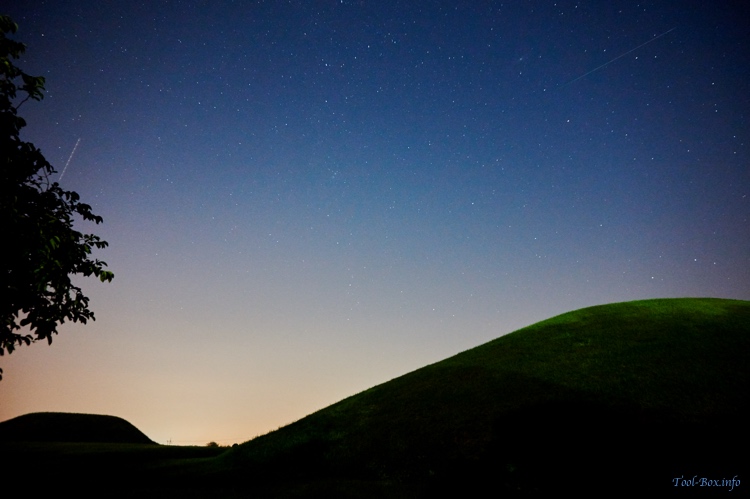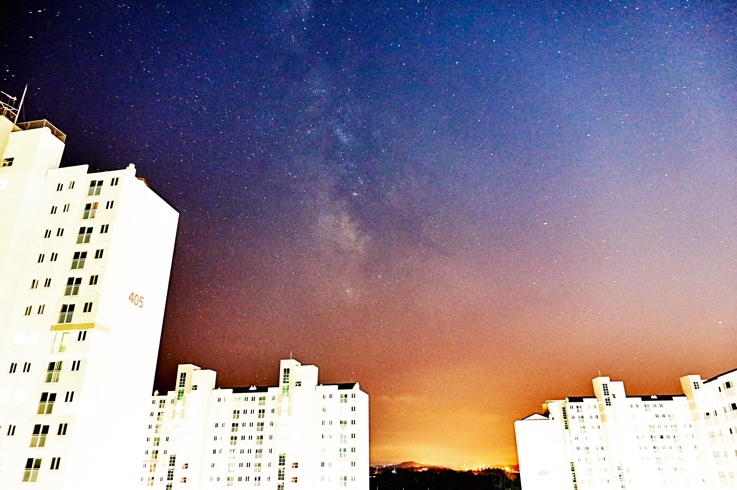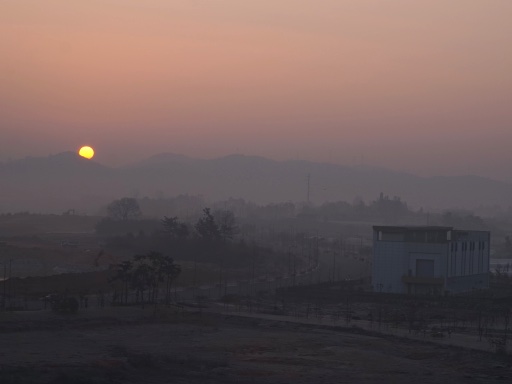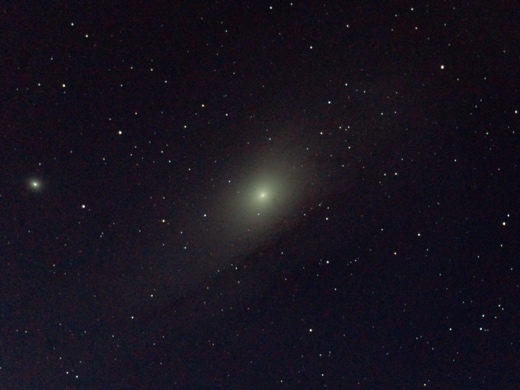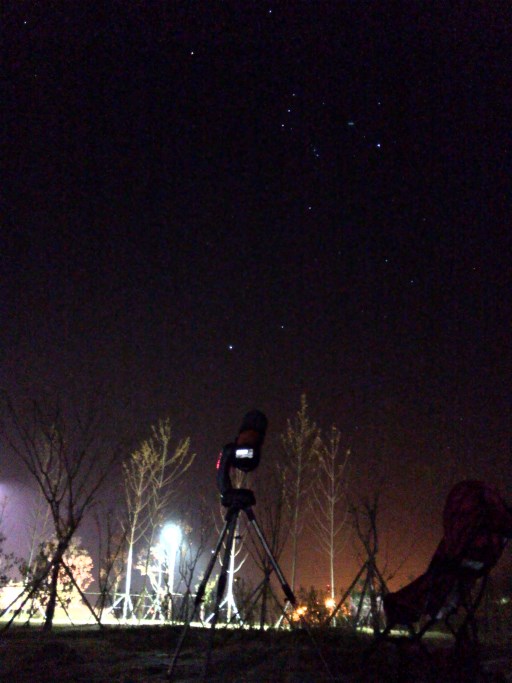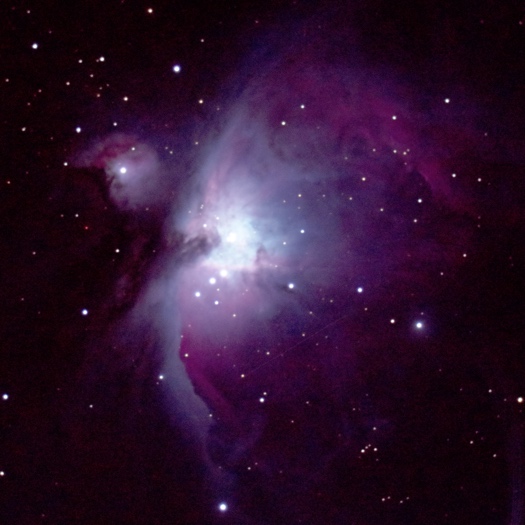Perseids meteor shower 2016 in Naju
Posted by Wesley onThis year's Perseids meteor shower was predicted to be prominent, garnering lots of public interest. Unfortunately for someone in Naju, the northern sky that the shower was to take place is polluted with light from Gwangju, making it hard to watch the fainter ones. To get a better view, I moved about 17km southwest to the Naju Bannam tumuli (ancient tomb mounds that encompass Sinchon-ri, Deoksan-ri, and Daean-ri tombs) next to the Naju National Museum. Upon arrival, I was disappointed to discover that the light pollution was still quite bad.
It was still better than being at home, so I set up my camera with the Deoksan-ri tombs #2 (left) and #3 (right) in front. There were already two families nearby who came to watch the sky. In the two hours I stayed, I was able to watch about five meteors falling, far less than the supposed maximum of 150 per hour. Of those, the camera caught two of them, the most striking one being shown here. The streak was going through the Andromeda constellation; the fuzzy dot to the left of the streak is the Andromeda Galaxy.
Meanwhile, the airplanes appeared much more often in the sky - there was one every five minutes or so. This is due to being more or less in the direct path of the flights between Seoul and Jeju, as well as Incheon and Southeast Asian cities. Even in this photo, the Mandarin Airlines flight AE231 (Incheon-Taipei) was caught on the left as a knotted line.
Device: Sony A5000 + SELP1650 (E PZ 16–50 mm F3.5–5.6 OSS)
Settings: 16mm - ISO 400 - 15s - f/3.5
Filters: None
Time: 2016-08-12 23:37:27 KST
Location: Naju, Korea
Defined tags for this entry: Andromeda, astronomy, constellation, galaxy, meteor shower, Perseids, Sony A5000, star
